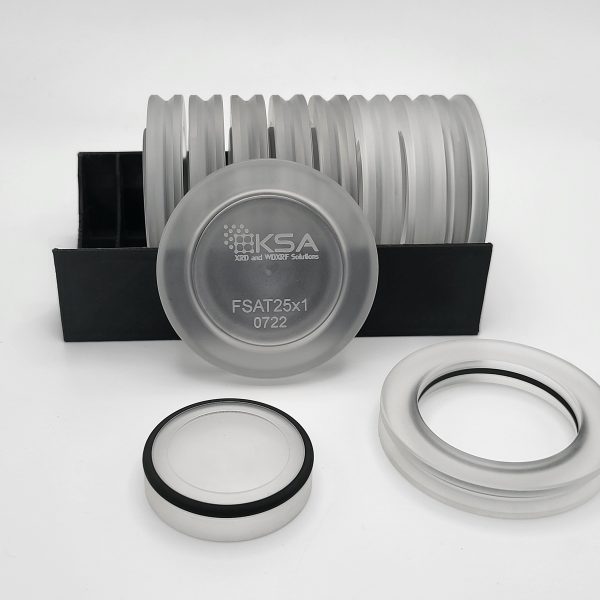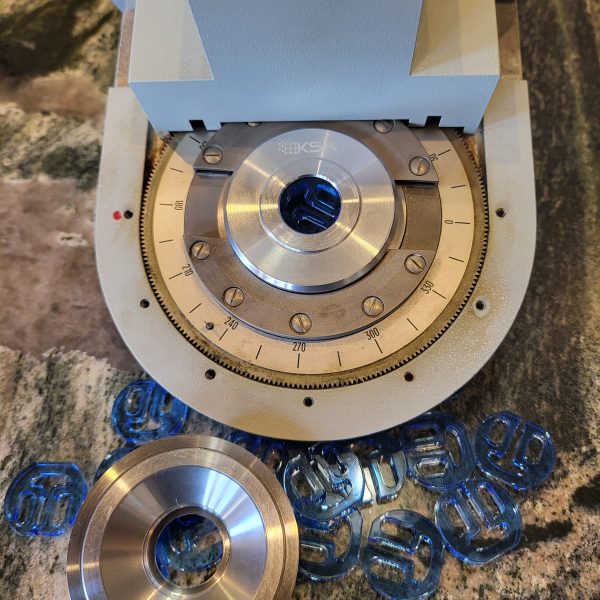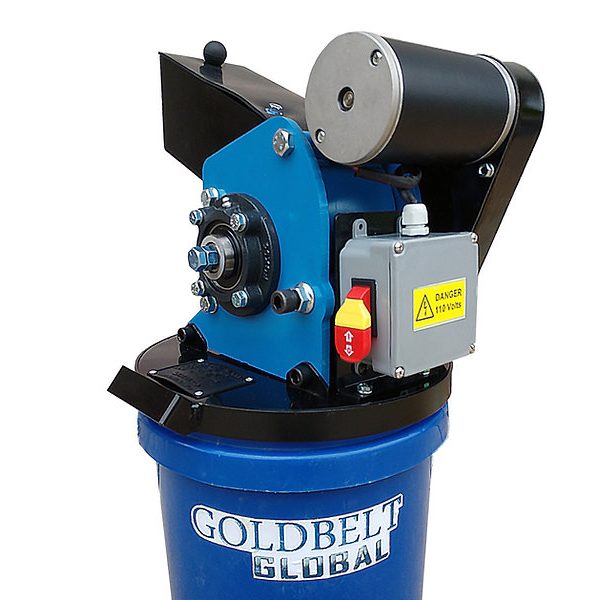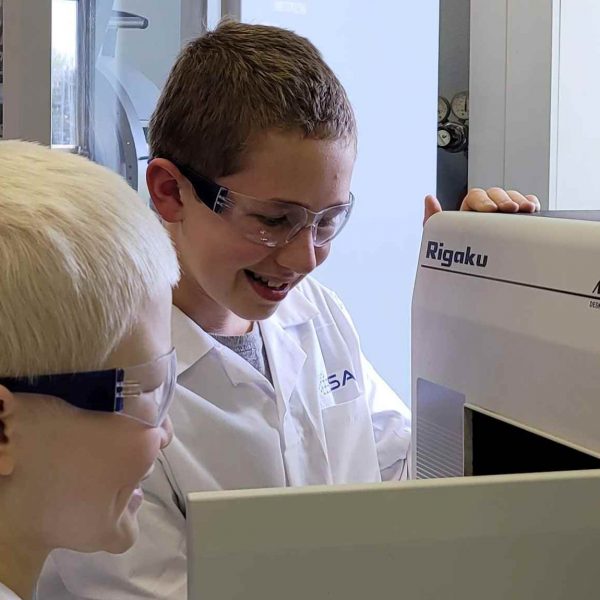Pure KA1 XRD with the Johansson monochromator

One of the fundamental facts of lab-based X-ray production is that our x-ray tubes emit much more than the pure KA1 lines we rely on for material characterization and quantification. Most XRD users are familiar with techniques and hardware for the reduction or elimination of KB1, W LA1 and Bremsstrahlung, but take for granted the inseparable pair […]
Plastic barrier film for air-sensitive sample holders

Revisiting an experiment from 2014 I still reference this post on our laboratory site often so it seems like it deserves a place on the main blog for KS Analytical Systems. Enjoy Our recent sealed sample cell project required a thin covering film to be applied over loose powder before analysis by XRD. We tested a few […]
Small, but not insignificant

These are probably the smallest parts we make in-house, but they’re critical to the proper function of about half of the instruments we support. These little bushings support the impeller of the water flow sensor in many Siemens and some Bruker XRF and XRD machines. They last for several years in most cases, but we […]
Water Flow and Cooling Performance – The Lifeline of a Healthy XRD System

X-Ray Diffraction (XRD) systems analyze the structure of materials such as crystals and powders. The X-Ray Tube generates heat from the interaction of electrons in the cathode and the anode. The electrons emitted from the cathode (filament) are accelerated towards the anode – when the electrons hit the anode, they produce x-rays. Keep in mind […]
Filter membrane sample holders for Rotation/Phi stages

The Siemens D5000 and Bruker D8 systems we work with have an optional phi-stage that is very useful. It looks and moves like any other rotation stage, but it’s driven by a stepper motor which actually makes it an additional degree of freedom. The user can rotate the sample at a specified rate, position it […]
New orbital crusher

Much of the material we receive is already finely ground and ready for XRD or XRF analysis, but sometimes we receive bulk material which must be homogenized before we can take a representative split for analysis. This is one of the most frustrating parts of working with samples and very time-consuming as we’ve historically done […]
Rigaku D-Max zero background sample holders

This project started with a phone call several months ago from a Canadian government lab. They had a very specific application so the design was driven much more by their requirements than most zero-background holder designs. A 1mm deep well with a zero-background plate at the bottom was a key specification. We tried several options […]
Introducing the KSA “My First” XRD system

Your little scientist will love the realistic lights and sounds of their very own X-ray diffraction system. At KSA we are firm believers that kids learn best by “doing”. There’s no better way to bring the next generation of bright thinkers into the lab. Now they can analyze real materials just like Mom and Dad! […]
Bruker D4 Endeavor on its way out

The D4 Endeavor fits in a unique niche in the XRD world. It’s basically the same thing as a Bruker D8, but built into a very compact cabinet with a large autosampler on top. These machines see heavy use in the cement, pharmaceuticals, and aluminum industries among others. Today we have one headed out to […]
Hybrid sample holders for Bruker FlipStick Autosamplers

There’s a simple and inverse relationship between the average atomic number of a given matrix and the efficiency with which it scatters X-rays. The effect isn’t all that much different from shining a flashlight on a white piece of paper. While it’s nothing like a mirror, you’ll definitely get light scattering off of it to […]

